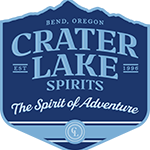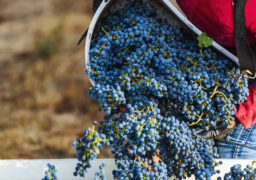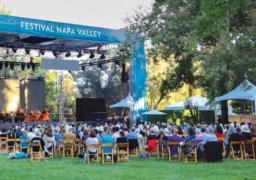Wine Growing Region Near Boise Identified for its Soil, Climate
Eagle, Idaho – The Idaho wine community gained an important new designation with the approval of the Eagle Foothills American Viticultural Area (AVA). An AVA is a federally designated wine grape-growing region distinguishable by distinct geographic features such as climate, soil, elevation and physical features. Conditions and grapes grown within this geographic region cannot be replicated.
Previously, Idaho vineyards were lumped together within the Snake River Valley AVA—one that spans through Idaho and eastern Oregon. The Eagle Foothills is the first AVA to be located completely within the boundaries of the state of Idaho, as well as the first sub-AVA of the Snake River Valley AVA.
“Establishing the Eagle Foothills AVA will help further position Idaho as a developing wine region and hopefully attract growers, wineries, tourism and jobs,” said Martha Cunningham, co-owner of 3 Horse Ranch Vineyards. Cunningham made the original push to identify and authenticate the new Viticultural area. “Our hope is that others will follow and carve their AVAs out of the beautiful Snake River Valley.”
The new area encompasses nearly 50,000 acres of land north of Eagle, near the capital city of Boise. Nearly 70 vineyard acres are planted with plans for more than 450 acres to be planted in the near future.
“There is so much opportunity within the Eagle Foothills AVA—it helps establish Idaho as a wine growing destination and gains recognition for Idaho wines as a whole.” said Moya Dolsby, executive director of the Idaho Wine Commission. “Not only does it tightly distinguish where grapes came from, but it also shows growers we have a region that should be considered. More growth will lead to increased sales and more production of fine Idaho wines.”
Idaho started gaining national attention and traction as a grape growing region when the Snake River Valley AVA was established in 2007.
Discussion about the Eagle Foothills’ unique terroir began in 2012 when Cunningham enlisted the help of Dr. Gregory Jones, a renowned climatologist and professor of environmental science at Southern Oregon University and Dr. Clyde Northrup, professor of geosciences at Boise State University. Both researchers agreed the terroir—a particular region’s climate, soil and terrain—is different from the rest of the Snake River Valley, or any other growing area.
“We realized that we lived in a special microclimate years before we planted our first 10 acres of grapes in 2005,” said Cunningham. “Our first grape harvest only produced a few hundred cases of wine, but thanks to the AVA, we could call them Snake River Valley grapes and wine. We look forward to branding our wine as Eagle Foothills grapes.”
Unique elements of the Eagle Foothills AVA include:
SOIL – Soils consist of sand from volcanic ash, silt, granite pebbles and clay that are well drained and rich in mineral grains because of the sedimentary bedrock from ancient Lake Idaho and the nearby granitic mountains.
CLIMATE – The hills form south facing slopes creating hot afternoons and evening shade. The cool temperatures, short growing season and low growing-degree days allow for successful ripening of early to mid-season grape varieties, with low acidity levels. The precipitation varies between 11-18 inches per year and averages 2,418 growing days annually.
WATER – Water is abundant, despite the desert terrain of the Eagle Foothills. The AVA is located near the Snake River aquifer—one of the most productive water sources in America. The proximity to water gives Idaho potential to have sustainable vineyards for generations to come.
The Eagle Foothills elevation sits at the north bank of Ancient Lake Idaho, ranging from 2,490 to 3,412 ft.
###
The Idaho Wine Commission is dedicated to marketing and promoting all Idaho wineries and growers. There are a total of 51 wineries with 1,300 vineyard acres planted. The wine industry contributed $169 million to Idaho’s economy. Visit www.idahowines.org for more information about wineries, vineyards and events in Idaho.
Photo: Idaho Wine Commission















